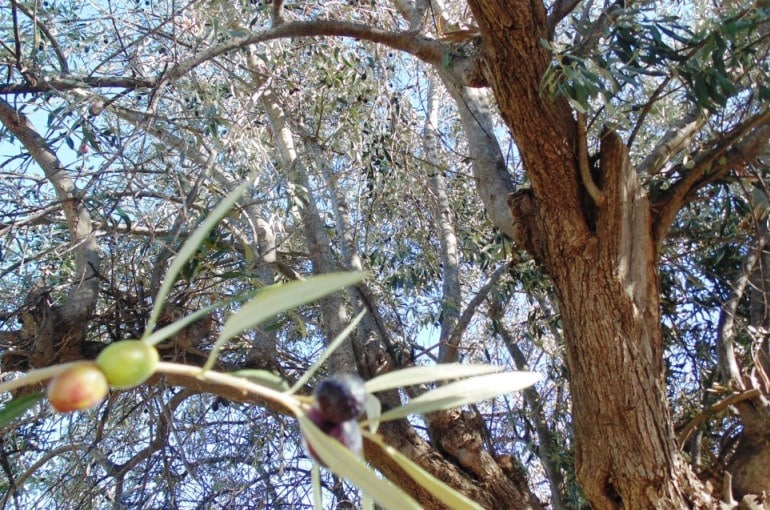Olive Tree Information

This post is also available in:
This post is also available in:
![]() Español (Spanish)
Español (Spanish) ![]() Français (French)
Français (French) ![]() Deutsch (German)
Deutsch (German) ![]() Nederlands (Dutch)
Nederlands (Dutch) ![]() العربية (Arabic)
العربية (Arabic) ![]() Türkçe (Turkish)
Türkçe (Turkish) ![]() 简体中文 (Chinese (Simplified))
简体中文 (Chinese (Simplified)) ![]() Italiano (Italian)
Italiano (Italian) ![]() Português (Portuguese (Brazil))
Português (Portuguese (Brazil)) ![]() polski (Polish)
polski (Polish)
Olive Tree Wiki – Olive Tree Info & Uses
The olive tree is a perennial, evergreen tree that can live and produce olives for more than a century. In some rare cases, olive trees have been reported to live and produce sprouts at an age of 1800 years old. The tree reaches a height 15-65 ft. (5-20 meters). As it happens with most trees, the height of the tree is affected by the vividness of the subject or of the variety, the soil and climate conditions, and finally the cultivation methods used. The trunk is cylindrical, smooth on young trees and bumpy in older, because lumps of varying size appear as the time goes by.
The root system of the olive trees develops vertically until the third to fourth year of its life. Later on, the original root system is replaced by another flocculent root system, produced mainly by spheroblasts or conger, formed in the olive tree neck, just below the soil surface. The root system development method is mainly determined by the nature of the soil. In some cases, it is reported that olive trees developed roots, which had reached 40 ft. (12 meters) in width and 20 ft. (6 meters) in depth.
Olive trees are cultivated globally in an area covering more than 15 million hectares. The number of cultivated olive trees reaches and maybe exceeds the stunning number of 1 billion. About 80% of these trees are located in the Mediterranean region. Countries such as Spain, Italy, Greece, Tunisia and others traditionally export olive oil, which is the cornerstone of the agricultural economic development and sustainability of some of those countries. However, other countries such as USA, Australia, Japan, China etc. have during the last two decades realized the huge economic and strategic importance of olive trees. Thus, they have given financial motives to olive growers, in an effort to become autonomous in olive products.
The olive tree plays a very important role, because not only does it utilize land that is unsuitable for other crops, but also helps to protect the soil from erosion. The main products produced by olive tree are olive oil and table olives. The pomace of olives is also important for industrial use. Some other by-products that may have economic importance are the leaves, wood, core etc. Finally, olive trees are often grown in pots indoors or outdoors as ornamental.
The genus Olea includes 30 different species, which are cultivated in five continents. The most important of these are: Olea europea. L., subspecies euromediterranea, Olea europea. L., subspecies cuspidate Vall, Cif, Olea europea. L., subspecies laperrini Batt and Trab, Olea chrysophylla Lamk, Olea hochstetteri, Olea somaliensis, Olea subtrinervata
You can enrich this article by leaving a comment or photo of your olive trees.
1.) Olive Tree Information & Uses
3.) Are Olive Farms profitable?
4.) Olive Tree Alternate Bearing
5.) Olive Tree Propagation & Pollination
6.) Olive Tree Climate – Temperature Requirements
7.) Olive Tree Soil Requirements
9.) Olive Tree Fertilizer Requirements
10.) Olive Tree Water Requirements
13.) Olive Trees Diseases and Pests
Do you have experience in Olive Tree cultivation? Please share your experience, methods and practices in the comments below. All the content you add will be soon reviewed by our agronomists. Once approved, it will be added to Wikifarmer.com and it will influence positively thousands of new and experienced farmers across the world.








































































